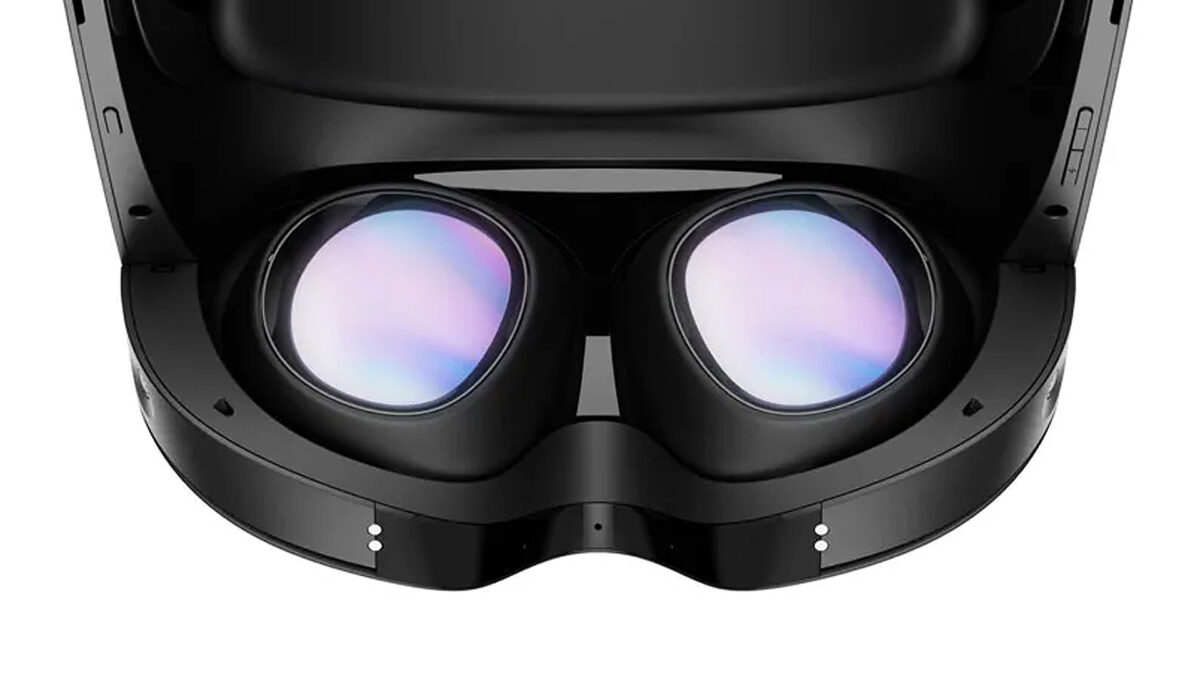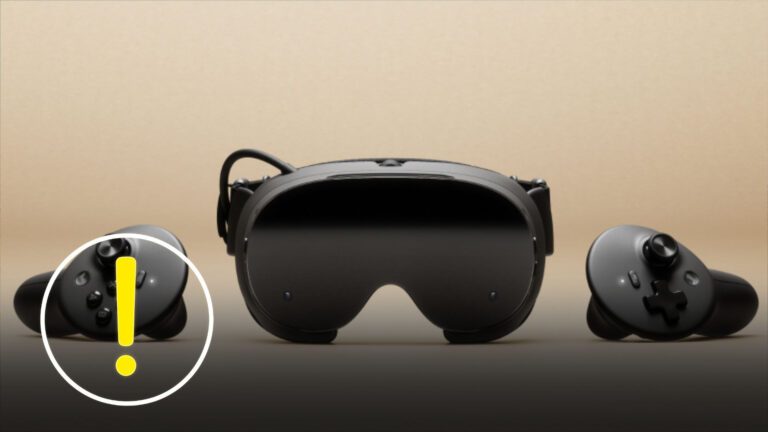When is the Meta Quest 4 coming? The next generation of Meta’s VR headsets is already looming on the horizon. We’ve compiled all the information and rumors about its release window, technical innovations, and Meta’s strategy for you.
Meta is already working intensively on the next generation of its VR headsets. While the Quest 3 and 3S are still relatively new on the market, there are already numerous reports and rumors about the upcoming Meta Quest 4. We’ve gathered all known information about the release, technical specifications, and Meta’s strategy for the future.
When will the Meta Quest 4 be released?
- The Meta Quest 4 is unlikely to launch before 2027.
According to a report by The Information, Meta originally planned to release the Quest 4 at the end of 2026. This timeline initially seemed plausible, as there were three years between the Meta Quest 2 and Meta Quest 3. Meta has also aimed to release at least one new hardware product each year. However, this release strategy now appears to have changed.
The success of the Ray-Ban Meta Smart Glasses has opened a new, more lucrative product category for Meta, which is set to expand to smart glasses with displays. In addition, the company is developing compact AR glasses such as the “Orion” prototype, which Meta showcased at last year’s Connect. Competition from Apple Vision Pro and Google’s AndroidXR, as well as slower-than-expected VR market growth, also seem to have prompted a rethink at Meta.
According to reports from UploadVR and The Wall Street Journal, Meta now intends to prioritize the release of a new compact mixed reality headset. The headset, known as “Puffin,” is reportedly set to launch in 2026, pushing the Meta Quest 4 back by at least a year. We therefore do not expect a release before 2027.
There have also been earlier rumors that Meta may be moving the Quest product line to a release cycle similar to that of console manufacturers like Sony, Microsoft, and Nintendo. New devices from PlayStation, Xbox, and others typically appear every five to eight years. Given that the Meta Quest 3 only launched in 2023, a potential Meta Quest 4 might not arrive until 2028.
Read also
Will the Meta Quest 4 again have two different models?
- Rumor has it the Meta Quest 4 could be released in both a standard and a premium version.
Unlike the current generation, where the Quest 3S launched a year after the Quest 3, the next generation is expected to launch in two variants at the same time: a more affordable standard version and a more expensive premium version. The internal codenames for these devices are “Pismo Low” and “Pismo High.”
The simultaneous launch of two Quest models marks a change in Meta’s strategy. While the company previously staggered the release of its VR headsets, a simultaneous release could reduce marketing costs and give customers a clear choice between standard and premium models from day one.
It will be interesting to see whether Meta aims for feature parity between the two devices, as was the case with the Quest 3 and Quest 3S, or whether the premium model will have exclusive features like eye and face tracking. Such differentiation could, however, make it harder for developers to adopt these technologies.
Meta Quest 4: What technical innovations can be expected?
- There are no confirmed details about the Meta Quest 4’s hardware yet, but some speculation suggests eye and face tracking.
Not much is known yet about the technical specifications of the Quest 4. However, there are indications that Meta is working on a prototype with eye and face tracking. VR enthusiast Luna discovered a job listing in which Meta was seeking testers for a “wearable technical device that records facial expressions, eye movements, and voice.” This listing was titled “Project Pismo” — one of the codenames for the Quest 4.
Eye tracking is considered an important technology for virtual and mixed reality, as it enables higher resolutions, better graphics, more realistic social interactions, and more intuitive user interfaces. Meta CTO Andrew Bosworth has already hinted that gaze tracking will eventually become standard for Quest headsets.
It is therefore likely that at least the more expensive “Pismo High” variant will feature eye tracking. Whether face tracking will also be implemented remains to be seen. So far, only the now-discontinued Quest Pro offered this feature, which initially sold for $1,500 USD.
What other devices does Meta have in development besides the Quest 4?
Ultra-light mixed reality headset as an alternative?
In parallel with the Quest 4, Meta is reportedly working on a completely new type of device. The headset, codenamed “Loma,” is scheduled to launch at the end of 2025 and will be significantly more compact than current VR headsets. According to The Information, it will have the form factor of a bulky pair of glasses and weigh only about 110 grams — compared to around 500 grams for current Quest headsets.
The Wall Street Journal reports that “Loma” will cost under $1,000 USD, making it more expensive than current Quest models but significantly cheaper than Apple’s Vision Pro. To achieve its low weight, computing power will be outsourced to an external, wired puck. There will be no controllers — instead, the device will be controlled using gaze and hand gestures, similar to the Apple Vision Pro.
Meta reportedly plans to market “Loma” primarily as a portable multi-monitor setup for productivity and entertainment. To offer suitable content, the company is already negotiating with major studios like Disney and A24, offering large sums for exclusive immersive experiences.
Meta Quest Pro 2: Is a successor actually coming?
While Meta halted development of a Quest Pro 2 prototype in 2024, there are now signs of a rethink. Bloomberg reporter Mark Gurman wrote earlier this year that, in addition to the Quest 4, Meta is also working on “a new high-end model that could be the successor to the Quest Pro headset.”

This could be a response to pressure from Samsung and Google, who plan to release their premium headset “Project Moohan” this year. Meta’s collaboration with ASUS on a headset that is reportedly set to feature eye and face tracking may also point in this direction.
My Take on the Meta Quest 4
The information available so far suggests that the Meta Quest 4 will not revolutionize the VR headset market, but rather expand the existing system with new features that already exist in other devices. The most important addition could be the integration of eye tracking, which would enable features like foveated rendering.
This could significantly reduce the processing load on the mobile headset when running high-quality VR and mixed reality content, since only the areas the user is actually looking at would need to be rendered in sharp detail. If Meta does indeed offer two different versions, a premium version with richer-color OLED displays could also be an option — these should be more widely available, more mature technologically, and cheaper in two or three years than they are today. One absolute no-go would be to once again offer a cheaper version with Fresnel lenses, like the budget Quest 3S. The next Quest generation must deliver optimal image clarity in all versions.
Overall, Meta’s current strategy seems aimed at serving different market segments with specialized devices — from budget-friendly all-round headsets to ultra-light glasses for media consumption. And who knows what devices the “opening” of the HorizonOS operating system to third-party manufacturers might bring. Whether this strategy will succeed, and whether the Quest 4 will actually launch in 2027 in the form described, remains to be seen. What is certain, however, is that the Quest product line is no longer Meta’s top priority.
Are you excited for the next Meta Quest, or does the next VR headset generation leave you cold? Let us know in the comments!
Sources: The Information, The Information, The Wall Street Journal, Luna (X), Bloomberg
Links marked with an asterisk (*) in this article are affiliate links. If you purchase via one of these links, we receive a commission. The product price for you remains unchanged.
No related articles found.










